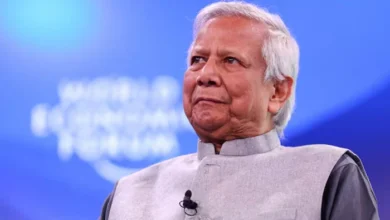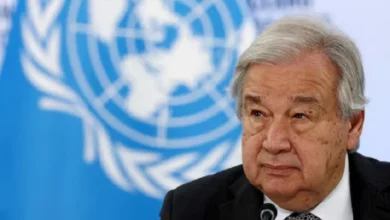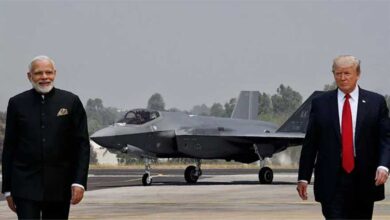DEIR AL-BALAH: US President Donald Trump’s special envoy Steve Witkoff visited southern Gaza on Friday during international outrage over starvation, shortages and deadly chaos near aid distribution sites.
Witkoff and US Ambassador to Israel Mike Huckabee toured one of Gaza Humanitarian Foundation’s distribution sites in Rafah, Gaza’s southernmost city, according to an official involved with the visit.
The official requested anonymity because he was not authorised to brief the media.
All four of the group’s distribution sites are in zones controlled by the Israeli military and throughout their months in operation have become flashpoints of desperation, where starving people scramble for scarce aid. Hundreds have been killed by either gunfire or trampling.
The Israeli military says it has only fired warning shots at people who approach its forces, and GHF says its armed contractors have only used pepper spray or fired warning shots to prevent deadly crowding.
Witkoff’s visit comes a week after US officials walked away from ceasefire talks in Qatar, blaming Hamas and pledging to seek other ways to rescue Israeli hostages and make Gaza safe.
White House press secretary Karoline Leavitt said Thursday that he was sent to craft a plan to boost food and aid deliveries as part of an effort “to save lives and end this crisis,” while Trump wrote on social media that the fastest way to end the crisis would be for Hamas to surrender and release hostages.
International organisations have said Gaza has been on the brink of famine for the past two years. The Integrated Food Security Phase Classification, the leading international authority on food crises, said recent developments, including a complete blockade on aid for 2 1/2 months, mean the “worst-case scenario of famine is currently playing out in Gaza.”
Though the flow of aid has resumed, including via airdrops, the amount getting into Gaza remains far lower than what aid organisations say is needed. A security breakdown in the territory has made it nearly impossible to safely deliver food to starving Palestinians, much of the limited aid entering is horded and later sold at exorbitant prices.
In a report issued Friday, Human Rights Watch called it “a flawed, militarised aid distribution system that has turned aid distributions into regular bloodbaths.”
Israel’s military and prime minister’s office did not respond to request for comment on the report.
A July 30 video published Thursday by the UN Office for the Coordination of Humanitarian Affairs showed an aid convoy driving past a border crossing as gunfire ricocheted off the ground near where crowds congregated.
“We were met on the road by tens of thousands of hungry and desperate people who directly offloaded everything from the backs of our trucks,” said Olga Cherevko, an OCHA staff member.
The war between Israel and Hamas started when Hamas attacked southern Israel on Oct. 7, 2023, killing around 1,200 people and abducting 251 others. They still hold 50 hostages, including around 20 believed to be alive. Most of the others have been released in ceasefires or other deals.
Israel’s retaliatory offensive has killed more than 60,000 Palestinians, according to Gaza’s Health Ministry. Its count doesn’t distinguish between militants and civilians. The ministry operates under the Hamas government. The UN and other international organizations see it as the most reliable source of data on casualties.







